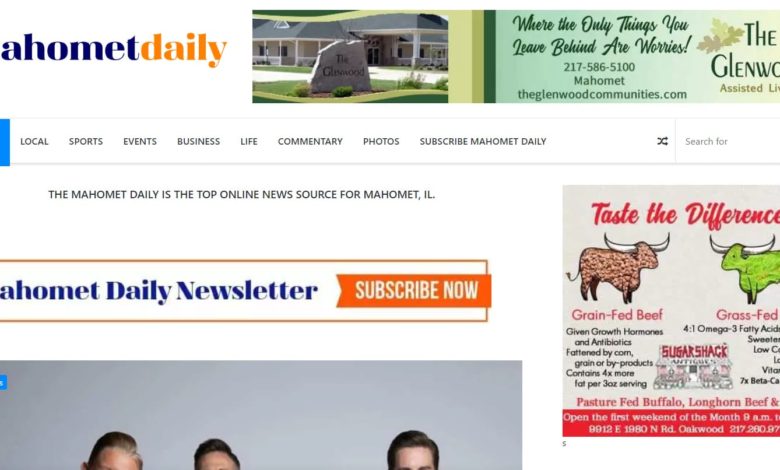Commentary: The one thing you should read this week

By FRED KRONER
fred@mahometnews.com
If you read nothing else this week, read this.
If you share nothing else this week, share this.
It’s a brief look at where those of us in the media business have been, where we’re at now and how we’ve moved from the past and are preparing for the future.
My first full-time newspaper job was at the Bloomington (Ill.) Daily Pantagraph.
One of the first people I met was Bill. He was about 12 years older than me. He had started in some foot-in-the-door position and worked his way up to city editor. This was in 1978.
He did not have a college degree.
Upon arriving at The News-Gazette, in Champaign, in 1981, I met Ken. He was an esteemed part-time member of our sports staff.
He had attended Parkland College, but did not have a four-year degree.
Over the next few years, as full-time openings occurred, Ken was always bypassed.
The reasons brought to mind facts that my college professors had emphasized repeatedly, that when I was in school, there were more students in journalism schools nationally than there were full-time positions at newspapers or magazines in the United States.
It’s a classic case of supply and demand. The news organizations could set high qualification standards because there were plenty of available candidates.
Ken eventually wound up working as a sports editor at weekly papers in at least three states.
As technology exploded, the newspaper industry was faced with a need to reinvent itself.
The primary purposes of news-gathering organizations for decades were to serve the needs of readers or viewers who wanted information.
In decades past, those who wanted details on a sporting event or city council meeting had to rely on the account published in a local newspaper or to the time a television or radio station devoted to it.
Into our lives were borne innovations our ancestors would not have imagined: 24-hour weather programming, 24-hour news networks, apps on phones or computers that permit users to literally follow a baseball game, pitch by pitch. We can watch those city council meetings or school board meetings on our cell phones live while they are happening.
Reporters then became obliged to do more than tell the story of what took place. That information was already out there. Journalists had to get behind the scenes, provide perspective, quantify what an event meant, off an analysis or perhaps digress into opinions about what might happen next.
Readers and viewers are no longer waiting for the morning editions to learn the outcomes of events from the previous evening. That information is available within seconds of their conclusion.
For at least 20 years, and probably closer to a quarter of a century, fewer people are turning to the traditional sorts of media to gain information. Newspaper circulation is going down.
Some of the cherished sources from our past are going away. Permanently.
We see that results all around us. Just in Central Illinois during the past three years, weekly newspapers from LeRoy, St. Joseph and Tolono have shut down.
There will assuredly be more. The only question is: Which ones?
The daily newspaper in Danville no longer puts out a print edition on Mondays.
Many print newspapers that are still existing are hardly thriving. The daily newspaper in the Illinois state capitol has a total of two full-time sportswriters.
Throughout the industry, as staff cuts are made or positions remain unfilled, there are now more qualified journalists than ever working as free-lancers or for online publications.
Examples are in evidence throughout the country. Since 2013, The Sporting News has turned its print publication into a digital-only product. The print version had been in existence for more than 125 years.
Locally, The News-Gazette has filed for bankruptcy and will be under new ownership by year’s end. What it ultimately means is to be determined, but it won’t be more of what we would describe as “the same.”
Change is not always a bad thing as we’ve seen with the ability to receive real-time results from meetings or ball games.
Still, caution should be encouraged.
There is another reality, one which offers similarities to 170 years ago during the California Gold Rush when people without a background in prospecting suddenly considered themselves experts.
Mixed in with the growing group of reputable publications are an increasing number of forums operated by persons without training of basic journalistic tenets.
History has shown us it’s not necessary to have a degree, but it’s imperative to have an understanding.
Accuracy is of paramount importance. Research is necessary to separate fact from fantasy. You don’t just wake up one morning and declare yourself a reporter.
Fair and impartial are guidelines that must be upheld for articles other than ones clearly labeled as commentaries or opinion pieces.
The immediate Mahomet area is fortunate – at least at this time – to have three organizations committed to supplying news and highlighting the community.
The News-Gazette and the Mahomet Citizen – both under the same ownership umbrella – have been fixtures in the community for generations. Their print circulation is not what it once was, but it hasn’t adversely affected their commitment to coverage.
The Mahomet Daily is no longer the newcomer on the local scene. It was established in 2013 and continues to be well-accepted.
Readership figures showed an average of about 3,000 readers daily in 2017 and more than 4,000 a day in 2018.
The upward trend appears to be continuing in 2019, with a day earlier this month showing 8,000 unique visitors to the site.
Those numbers, however, aren’t really the ones that impress me the most.
My eye goes to the number of stories we have told, the variety we have provided, the lives we have impacted, the perspective we have shared and the information we have gathered and released in a timely manner.
We couldn’t do what we do if we had the costs associated with producing a printed publication, but we can continue to be a valued source for those who seek a broader picture of our community online and for those who want to see a thorough examination and to not gloss over the issues as they arise.
I long ago lost the ability to count the changes I have witnessed in 50-plus years in the profession on my hands. There aren’t enough available fingers.
There is one change which has not occurred, either for myself or for those with whom I have been associated. The top priorities remain accuracy, presenting a complete picture and recognizing that virtually every story has two sides and that credence should be given to each.
For better or for worse, we are in this together, those of us who call this community our home. Let’s work together to make it better, not worse..



